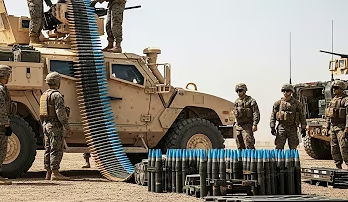As global tensions continue to rise and modern warfare evolves into an increasingly complex arena, the United States is pushing the boundaries of innovation in military technology. At the forefront of this new wave of defense capabilities is the highly anticipated F-45 Condor—a next-generation stealth fighter jet that promises to redefine the future of aerial combat. More than just a new aircraft, the Condor represents a strategic leap forward in how the U.S. plans to assert and maintain air dominance in a rapidly changing global landscape.
Scheduled for its maiden flight in 2025, the F-45 Condor is not merely an upgrade of existing platforms—it is a complete reinvention of the fighter jet concept. With a futuristic design that emphasizes low observability, high agility, and advanced electronic warfare systems, the Condor is built for survivability and lethality in contested airspace. It has been engineered with cutting-edge stealth features that allow it to operate virtually undetected, even in regions guarded by sophisticated radar systems. Its sleek frame, internal weapons bay, and radar-absorbing materials make it a true ghost in the skies.
One of the most impressive aspects of the F-45 Condor is its AI-assisted combat system. Pilots will be supported by an onboard artificial intelligence co-pilot capable of analyzing threat patterns, managing electronic warfare defenses, and even assisting with targeting decisions in real time. This reduces pilot workload during high-pressure missions and dramatically increases the Condor’s combat effectiveness. In addition, the aircraft will be capable of autonomous operations, making it a strong candidate for manned-unmanned teaming—working in tandem with drones or other robotic systems on the battlefield.
Speed and maneuverability also set the Condor apart. With advanced propulsion systems and next-generation thrust vectoring capabilities, the aircraft will be able to perform extreme maneuvers and operate efficiently at high altitudes and supersonic speeds. These attributes make it especially suited for dogfighting, interception missions, and deep penetration strikes in hostile environments.
But perhaps the most critical question surrounding the Condor is whether it can maintain America’s edge in an increasingly competitive arena. Nations like China and Russia are not standing still—they are actively developing their own advanced fighter jets, such as China’s J-20 and Russia’s Su-57. These aircraft are designed with stealth and agility in mind and pose a real challenge to U.S. air superiority. In response, the F-45 Condor is being designed to stay ahead of these threats, not just match them.
The geopolitical implications of the Condor are significant. In a world where military power plays a central role in diplomacy and deterrence, the ability to project power from the skies is more critical than ever. The F-45 Condor isn’t just a symbol of technological prowess—it’s a strategic asset that may well determine the balance of power in the coming decades.
As the world watches and rival powers advance their own aerial arsenals, all eyes are on the F-45 Condor. Will it truly deliver on its promise and secure the skies for the United States? Only time—and its performance—will tell.


